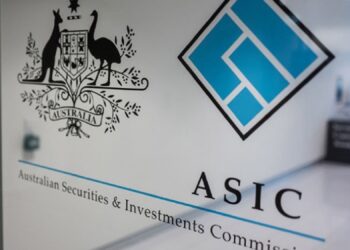Recent legislative change has however cast a shadow over whether reversionary pensions are actually all that important, writes Aaron Dunn.
The use of reversionary pensions have had their advantages for some time, in particular in light of the Commissioner's initial views expressed within TR 2011/D3, which discussed when a pension commences and ceases.
Recent legislative change has however cast a shadow over whether reversionary pensions are actually all that important any more in light of recent measures contained within Income Tax Assessment Amendment (Superannuation Measures No. 1) Regulation 2013.
These new laws now provide for:
- Continuation of a fund's tax exemption post the death of a member; and
- An alternate method for determining a deceased member's super components from a pension.
Continuation of a fund's tax exemption post the death of a member
The previous announcement by Government in the Mid-Year Economic & Fiscal Outlook (MYEFO) remedied the Commissioner's view stating that a pension would cease at the member's death unless automatically reverting to a tax dependant beneficiary.
These new measures, recently registered, now expand the meaning of superannuation income stream benefits for the purposes of section 295-385 and 295-390 of the ITAA 1997, allowing for the fund to continue to claim tax exemption on earnings for a specified period.
This specified period is from the death of the member until the death benefit has been paid as a lump sum or income stream. This must be paid as soon as practicable.
Importantly, the tax exemption will not apply on any amounts added to the member's benefit through insurance policy proceeds or via self-insurance.
This effectively means that the continuation of the tax exemption will only apply on value of the superannuation interest at death, adjusted for any investment earnings.
This is to ensure that the level of the exemption for the relevant period after the member's death is no greater than it was before their death (allowing for investment earnings after the member's death).
To understand how this legislation will work, let's take a look at a couple of examples:
Example 1
Geoff was receiving a superannuation income stream from his self-managed superannuation fund (SMSF) immediately prior to his death on 15 January 2013.
There was no reversionary beneficiary of the income stream and no amounts (other than investment earnings) were added on or after his death to his superannuation interest that was supporting the pension.
His wife Val decides to take the death benefit as a lump sum.
On 4 June 2013, which was in the circumstances as soon as practicable after Geoff's death, a single lump sum of $300,000 was paid to the Val, which did not contain any additional insurance policy proceeds.
For the purposes of the earnings tax exemption, $300,000 will be taken to be the amount of the superannuation income stream benefit that was payable from 15 January 2013 until 4 June 2013.
Example 2
Using the same facts with Geoff in the example above, however as part of the lump sum payment, the trustees decide to pay an anti-detriment amount of $30,000, in addition to the $300,000 lump sum.
The amount of $300,000 will be taken to be the amount of a superannuation income stream benefit that was payable from 15 January 2013 until 4 June 2013 (as $30,000 of the superannuation lump sum is attributable to an amount other than investment earnings that was added to the relevant superannuation interest on or after Geoff's death).
With benefits required to be paid out as soon as practicable, it is not uncommon that a death benefit payment may be made as an interim and final payment.
The legislation allows for tax exemption to continue through until the final death benefit has been paid. Furthermore, with multiple beneficiaries to receive superannuation death benefits, the tax exemption will be calculated on each beneficiaries' entitlement through until the benefit has been paid (whether paid as a pension or lump sum).
Alternate method for determining a deceased member's super components from a pension
The introduction of the proportioning rule has significantly shifted the strategic focus for many advisers when it comes to commencing an income stream.
With the proportions of an income stream established at the commencement of a pension, appropriate structuring can provide significant tax savings at an estate planning level (where any residual money is ultimately paid to non-dependant beneficiaries).
There has however been a 'cloud of uncertainty' with what happens with multiple interests (ie, pensions) when a member dies within an SMSF, given the Commissioner's views expressed within TR 2011/D3? Did the pensions go back to one superannuation interest as required within a SMSF (accumulation) or do they remain separate interests?
New regulation 307-125.02 of the Income Tax Assessment Regulations (ITAR 1997) has now put this uncertainty behind us, with this alternate method allowing for the tax-free and taxable proportions of the original income stream of the deceased member to be retained in paying the super death benefit.
To utilise this alternate method, the following conditions must be satisfied:
- A person (the deceased) was receiving a pension from their super interest immediately before their death; and
- The original terms and conditions of the pension did not automatically revert to another person on the deceased's death; and
- No amounts other than investment earnings or an amount to fund an anti-detriment increase have been added to the relevant superannuation interest on or after the deceased's death; and
- After the deceased's death, a superannuation death benefit lump sum is paid, and/or a new income stream is commenced, using only an amount from the relevant super interest.
Where amounts are added to the death benefit by way of anti-detriment, insurance proceeds or self-insurance, these amounts will form part of the taxable component, rather than be applied in proportion to the components of the income stream.
With these changes stated above, the main drivers for establishing reversionary pensions have now been diminished, with effectively the same result for reversionary and non-reversionary income streams.
However, reversionary pensions should take priority where insurance is in place
The benefits of reversionary pensions do remain true for certain SMSF pension-paying members that have life insurance in place.
The continuation of an income stream effectively means that the insurance proceeds should be applied not to the taxable component (as previously stated), but rather in the proportions in which the income stream commenced.
So, should you still consider having reversionary pensions in place?
Most definitely where a member has insurance in place, but more broadly I believe it continues to provide a more seamless transition for any tax-dependant recipient.
Aaron Dunn is the founder of The SMSF Academy and the author of www.thedunnthing.com.
Originally published by SMSF Essentials.





